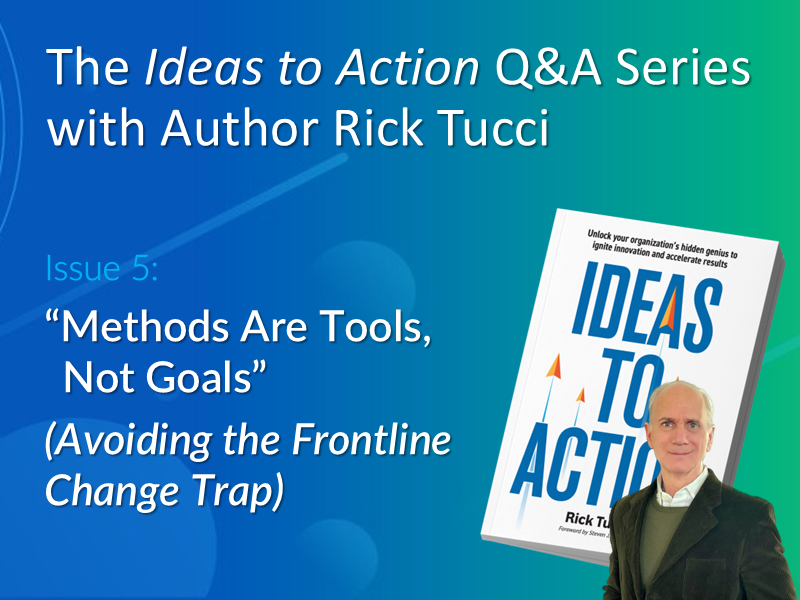Q: Rick, what is the Frontline Change Trap?
Rick Tucci:
It’s what happens when leaders adopt methods—like Lean or Six Sigma—and then apply them dogmatically, as if every problem requires the same process. Instead of empowering employees, the method becomes a straitjacket. Frontline workers who know the issues best are sidelined, enthusiasm fades, and change stalls.
Q: Why is this trap so common?
Rick Tucci:
Because methods like Lean and Six Sigma have impressive track records. Leaders are naturally drawn to proven approaches. But when the method becomes the goal, rather than a means to results, organizations fall into the trap. They end up chasing certifications, producing endless charts, or forcing problems through steps that don’t fit.
Q: How does the Frontline Change Trap affect employee engagement?
Rick Tucci:
It undermines it. Employees quickly notice when their ideas are ignored in favor of “following the process.” Instead of feeling empowered, they feel like passengers. That’s when you hear the backlash: “Sick Sigma.” “Lean is Mean.” What began as a way to build ownership ends up eroding it.
Q: Where does data fit into this problem?
Rick Tucci:
Data is always needed—but not all data is created equal. Too often, Belts spend months building new measurement systems to validate what frontline employees already knew from experience. That’s a classic symptom of the Frontline Change Trap. Of course, some problems demand rigorous statistical analysis—patient safety, process variation, product stability. But in many cases, frontline observation and experience is the most credible data leaders will ever get.
Q: Can you share an example?
Rick Tucci:
One of the clearest examples is what I call the Amber Vial story. A frontline scientist suggested switching to amber-colored vials to protect a drug’s potency. But the project leader insisted on running months of Design of Experiments testing before acting. The solution eventually matched the employee’s suggestion—but the delay wasted millions and put lives at risk. That’s the cost of elevating method over wisdom.
Q: How does the Ideas-to-Action Process™ help leaders avoid this trap?
Rick Tucci:
It gives leaders a framework for discernment. The five-step process ensures problems are targeted precisely, frontline ideas are prioritized quickly, and advanced tools are applied only when they truly add value. In other words, it treats methods as tools—not goals. That balance restores speed, credibility, and engagement.
Q: What mindset shift do leaders need to make?
Rick Tucci:
Leaders must remember: the purpose is not to run the method, it’s to achieve results. That requires trust—trust that frontline employees know more than the charts can show, and trust that leaders can use judgment to match the right tool to the right problem.
Take the Next Step to Employee-Powered Innovation
This is Issue 5 of the Ideas-to-Action Q&A Series with author Rick Tucci—a chapter-by-chapter journey through the mindset, method, and results of employee-powered innovation.
- Missed Issue 4? Read it here: Ideas-to-Action Video Newsletter Issue 4 | The Impasse to Change (and Why It Doesn’t Have to Be So Hard!)
- Want to dive deeper? Get the book on Amazon.
- Explore the full suite of Ideas-to-Action solutions: www.ideastoactionplatform.com


